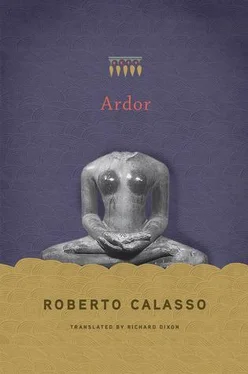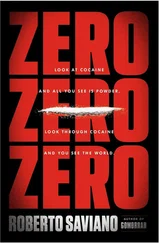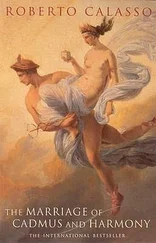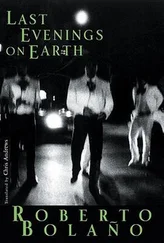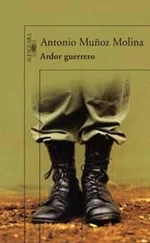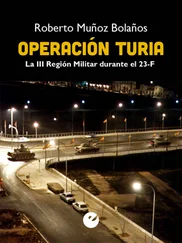Girard’s fallacy was to think that sacrifice in the brahminic version was a disguising of the other sacrifice, which seeks to banish a scapegoat. Thus, with the boldness of the debunker — a boldness much like that of Freud’s and, at one time, of Voltaire’s, which the West proudly regards as one of its singular, irreplaceable qualities — Girard proceeded to unmask first Greek tragedy and then, little by little, other literary and religious forms, including finally the speculations of the Brāhmaṇas.
But in pursuing this illusion, Girard was doing nothing more than tracing back the movement in secularized society that can no longer see nature or any other power beyond itself and believes it is itself the answer for everything. A movement that is still active today and has made the world into a secular totality dotted with islands and streaks of fundamentalist religion. And here there is good reason to think that even the secularized world is prone to fundamentalism, in that the only one on which it adores lavishing offerings is society itself. Offerings that ought to give a lustrous shine: first of all advertising, the endless, ever-changing stream of images that covers every surface, the only laboratory that continues nonstop and covers the totality of time, like a sattra. Apart from some isolated cases, such as occasional glimpses in Simone Weil, attention has not yet been focused on the religion of society , which is the highest form of superstition. And yet this should be our challenge, this immense object of contemplation, so boundless and pervasive that it is not even perceived as an object.
* * *
Nature, for urban man, is a barometric variation and a few leafy islands scattered across the urban fabric. Apart from this, it is raw material for manufacture and a scenario for leisure. For Vedic man, nature was the place where the powers were manifest and where exchanges between the powers took place. Society was a cautious attempt at becoming a part of those exchanges, without disturbing them too much and without being annihilated by them.
* * *
As soon as war became total, and therefore far bloodier than any previous war in terms of death toll and weapon power, it absorbed within itself the lexical legacy of sacrifice. Victim, self-denial, consecration, redemption, trial by fire — all words and expressions recurring in war reports. Where the dominant word is sacrifice itself. A phenomenon that reached its peak — as if European history had converged toward that point — in the First World War. Never had the language of sacrifice been so squandered, in the absence of sacrificial rites. The Second World War brought a further growth in weapon power and the number of dead. But a new factor would be added: the extermination of Jews and other enemies for racial reasons by Hitler’s Germany. For several years, just after the war, language faltered: there was an uncertainty about how to describe these events. By 1948, Raul Hilberg was already working on a book that would become one of the leading works on the question, entitled simply The Destruction of the European Jews , published in 1961. But another word soon began to spread: holocaust. A word that did not belong to the language of the time and describes one of the two basic types of Jewish sacrifice: ‘olah , the offering “that goes up” to the altar where the victim is completely burnt. A sacrifice quite different from the “peace offerings,” shelamim , ceremonies where the officiants were allowed to eat a part of the sacrificial meat. And so the extermination of six million Jews by the Nazis was described using a word that suggested certain sacred ceremonies, celebrated from the time of Noah by the ancestors of those killed. Someone pointed out that this was an enormous blunder, but no one listened and the word became established by force of use in the various European languages. Something irreversible had happened: in fact, as was being discovered in all its horrendous detail, the extermination of the Jews had not been carried out as an operation of war, but as a process of disinfestation. And that process, in which the Jews had been the victims, was now being described using a word that Jews themselves, as officiants, had used for certain ceremonies to please Yahweh. The immensity of that misunderstanding was a sign that history had entered a phase where muddle and misconstruction between ancient and modern would be pushed far — much farther than ever before.
And yet, in the inappropriate and jarring choice of the word holocaust to describe the extermination of the Jews, an invisible hand was at work that was not just the hand of ignorance. That word was indicative of something that was lurking mysteriously. War had taken over from sacrifice, but now sacrifice was about to take the place of war. The extermination of the Jews, in the way it was carried out by the Nazis, had been something halfway between the slaughterhouse and a decontamination process. And it could have happened in peacetime, like a gigantic waste disposal operation. So military terms were no longer appropriate. And for this reason it was natural — horribly natural — to fall back on the terminology of sacrifice.
Several years would pass, and the twenty-first century opened its eyes watching the collapse of the Twin Towers. Here again, an uncertainty in language. The attackers were immediately called “cowards.” But cowardice is the oddest accusation to make against someone who kills himself with full determination and maximum violence. Or the suicide attackers were called kamikaze. But the Japanese kamikaze were soldiers carrying out acts of war. Whereas the attackers in New York were civilians acting in peacetime. At work once again was a subtle wish to deflect attention, fixing it on an exotic and inappropriate word. It would have been better to open the pages of Livy and note that the Islamic suicide-killers had much in common with a mysterious sacrificial institution in ancient Rome: the devotio.
* * *
It is everyday experience at the beginning of the third millennium that sacrifice has become the new feature of war. Islamic suicide-killers follow variations on the Roman rite of devotio recorded by Livy in the case of the consul Decius Mus. In 340, while fighting against the Latins under Mount Vesuvius, having taken a vow to the gods of the underworld, he plunged on horseback into the enemy ranks and after being stabbed several times, fell “inter maximam hostium stragem,” among a great heap of enemies. His death had the purpose of dragging the whole army of the Latins to defeat, through its contagion.
More than the warrior, it is the figure of the suicide-killer that has brought trouble for the entire American and allied military-industrial apparatus. And this is because the lethal weapon of sacrifice is voluntary death. Much more to be feared when it conceals substitution within it. Devotio , in principle, was reserved for those who exercised supreme imperium , as in the case of the consul Decius. But Livy explains: “Illud adiciendum videtur, licere consuli dictatorique et praetori, cum legiones hostium devoveat, non utique se, sed quem velit ex legione Romana scripta civem devovere; si is homo qui devotus est moritur, probe factum videri” (“It seems proper to add here that the consul, dictator, or praetor who formulates the devotio for the legions of the enemy need not designate himself for the devotio but may also choose any citizen from a regularly enlisted Roman legion; if the man designated for the devotio dies, it is deemed that all is well”). The only problem might be where the soldier whom the leader designates for the devotio does not in the end die. In that case a sacrifice of atonement has to be performed: “a seven-foot-high image of the man is buried and an atonement victim is killed.”
Читать дальше
